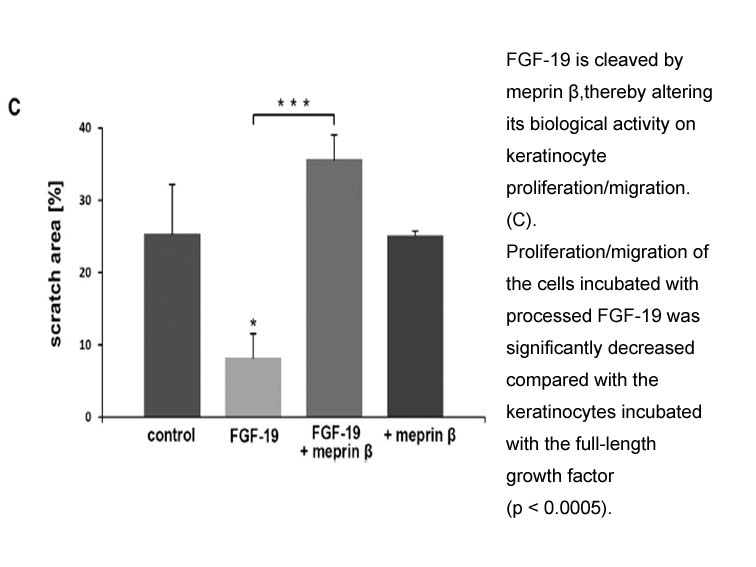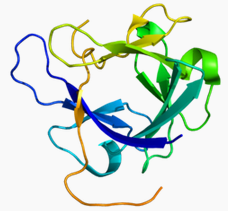FGF-19, human recombinant protein
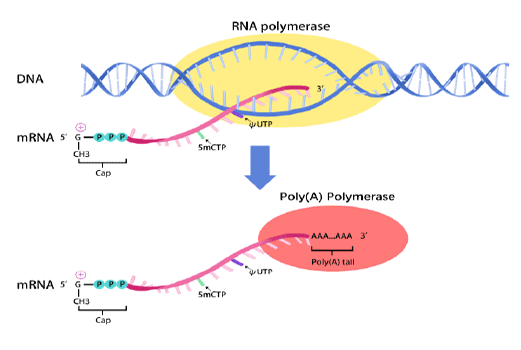
mRNA synthesis
In vitro transcription of capped mRNA with modified nucleotides and Poly(A) tail
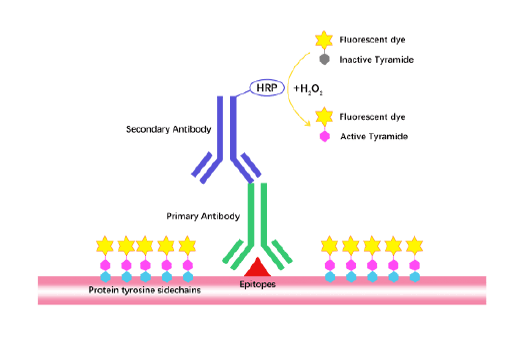
Tyramide Signal Amplification (TSA)
TSA (Tyramide Signal Amplification), used for signal amplification of ISH, IHC and IC etc.
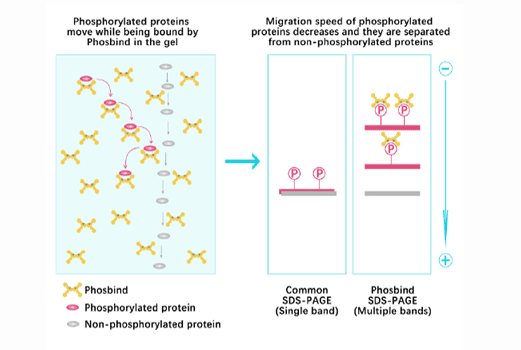
Phos Binding Reagent Acrylamide
Separation of phosphorylated and non-phosphorylated proteins without phospho-specific antibody
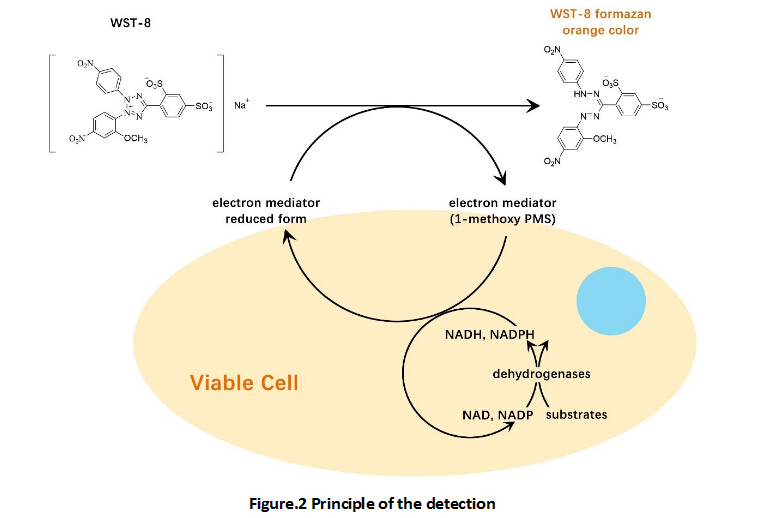
Cell Counting Kit-8 (CCK-8)
A convenient and sensitive way for cell proliferation assay and cytotoxicity assay
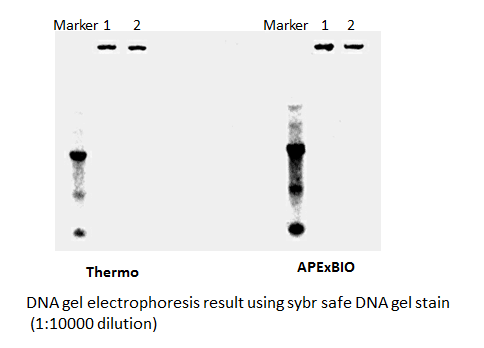
SYBR Safe DNA Gel Stain
Safe and sensitive stain for visualization of DNA or RNA in agarose or acrylamide gels.
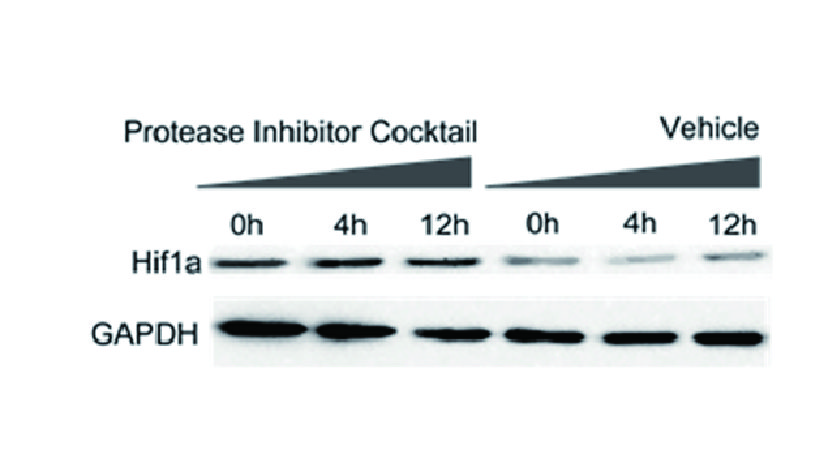
Inhibitor Cocktails
Protect the integrity of proteins from multiple proteases and phosphatases for different applications.
Human FGF-19 is encoded by the FGF19 gene. FGF-19 belongs to the FGF-19 subfamily which has three members FGF-19, 21, 23. FGFs are classically considered to be paracrine factors and are known for their roles in tissue patterning and organogenesis during embryogenesis. By contrast, the FGF-19 subfamily has recently been shown to function in an endocrine manner. Members of this subfamily have poor ability of binding to heparin binding site which is a crucial factor in ligand-receptor complex formation. β-Klotho has been identified as co-factor required for FGF-19, 21, 23 signaling. It can obviously increase ligand-receptor affinity. Unlike most FGFs which bind to and activate more than one FGF receptor, FGF19 is a specific ligand for FGF R4. In FGF-19 transgenic mice, reducing liver triglycerides, increasing fatty acid oxidation, reducing glucose levels and improving insulin sensitivity can be observed.
Reference:
1. Ladher RK, Anakwe KU, Gurney AL, et al. 2000. Science. 290:1965-7
2. Tomlinson E, Fu L, John L, et al. 2002. Endocrinology. 143:1741-7
3. Smallwood PM, Munoz-Sanjuan I, Tong P, et al. 1996. Proc Natl Acad Sci U S A. 93:9850-7
4. Fu L, John LM, Adams SH, et al. 2004. Endocrinology. 145:2594-603
5. Kharitonenkov A, Shiyanova TL, Koester A, et al. 2005. J Clin Invest. 115:1627-35
6. Kurosu H, Kuro OM. 2009. Mol Cell Endocrinol. 299:72-8
7. Lin BC, Wang M, Blackmore C, et al. 2007. J Biol Chem. 282:27277-84
8. Kharitonenkov A, Dunbar JD, Bina HA, et al. 2008. J Cell Physiol. 215:1-7.
|
Gene ID |
9965 |
|
Accession # |
O95750 |
|
Alternate Names |
|
|
Source |
Escherichia coli. |
|
M.Wt |
Approximately 21.8 kDa, a single non-glycosylated polypeptide chain containing 195 amino acids. |
|
AA Sequence |
MRPLAFSDAG PHVHYGWGDP IRLRHLYTSG PHGLSSCFLR IRADGVVDCA RGQSAHSLLE IKAVALRTVA IKGVHSVRYL CMGADGKMQG LLQYSEEDCA FEEEIRPDGY NVYRSEKHRL PVSLSSAKQR QLYKNRGFLP LSHFLPMLPM VPEEPEDLRG HLESDMFSSP LETDSMDPFG LVTGLEAVRS PSFEK |
|
Appearance |
Sterile Filtered White lyophilized (freeze-dried) powder. |
|
Stability & Storage |
Use a manual defrost freezer and avoid repeated freeze-thaw cycles. - 12 months from date of receipt, -20 to -70 °C as supplied. - 1 month, 2 to 8 °C under sterile conditions after reconstitution. - 3 months, -20 to -70 °C under sterile conditions after reconstitution. |
|
Formulation |
Lyophilized from a 0.2 µm filtered concentrated solution in PBS, pH 7.4. |
|
Reconstitution |
We recommend that this vial be briefly centrifuged prior to opening to bring the contents to the bottom. Reconstitute in sterile distilled water or aqueous buffer containing 0.1 % BSA to a concentration of 0.1-1.0 mg/mL. Stock solutions should be apportioned into working aliquots and stored at ≤ -20 °C. Further dilutions should be made in appropriate buffered solutions. |
|
Biological Activity |
Assay #1: Fully biologically active when compared to standard. The biological activity is measured by its binding ability in a functional ELISA. Immobilized rHuFGF R4 at 5 µg/ml can bind rHuFGF-19 with a linear range of 3-200 ng/ml. Assay #2: Fully biologically active when compared to standard. The ED50 as determined by a cell proliferation assay using murine Balb/c 3T3 cells is less than 150 ng/ml, corresponding to a specific activity of > 6.7 × 103 IU/mg. |
|
Shipping Condition |
Gel pack. |
|
Handling |
Centrifuge the vial prior to opening. |
|
Usage |
For Research Use Only! Not to be used in humans. |
质量控制和DataSheet
- 批次:
-
纯度 > 95 % by SDS-PAGE and HPLC analyses.
- Datasheet
Endotoxin: Less than 1 EU/µg of rHuFGF-19 as determined by LAL method.
相关生物数据
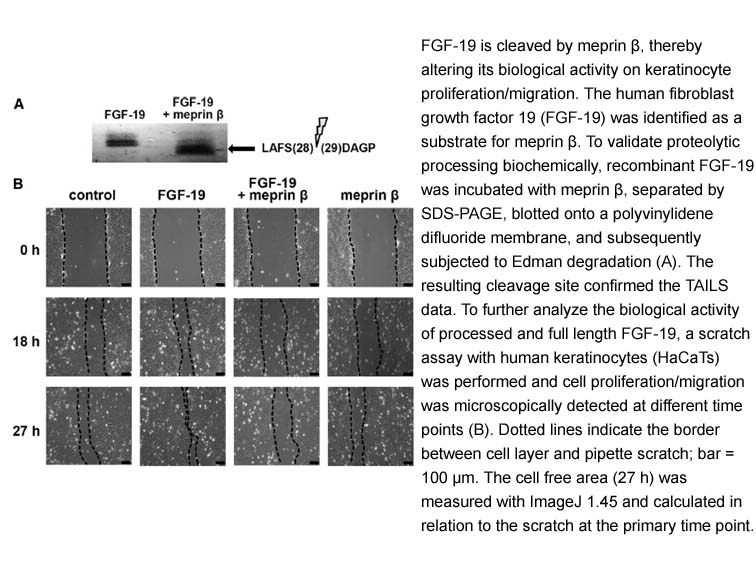
相关生物数据
